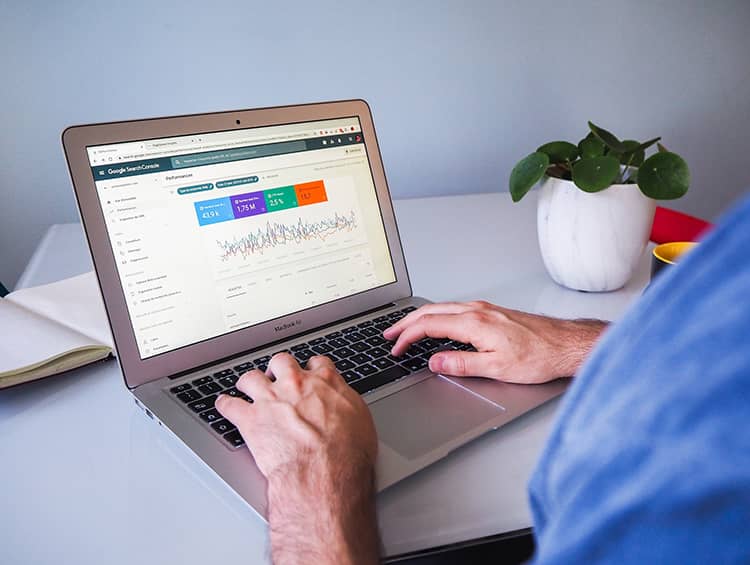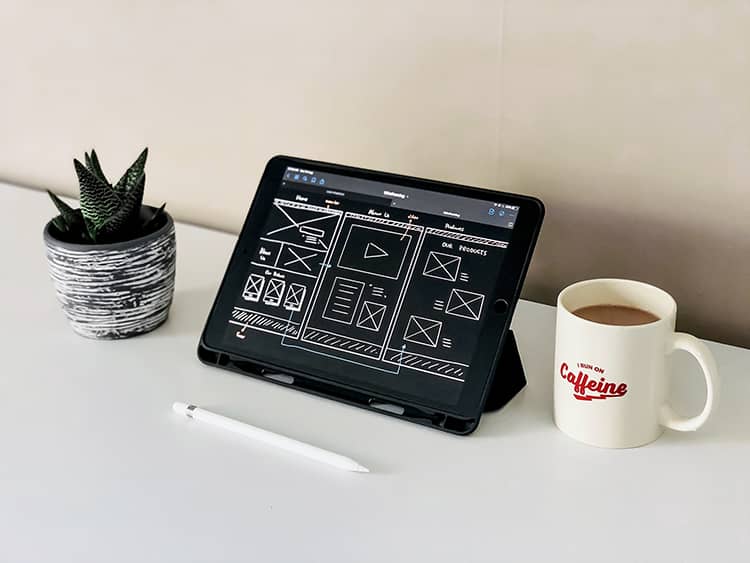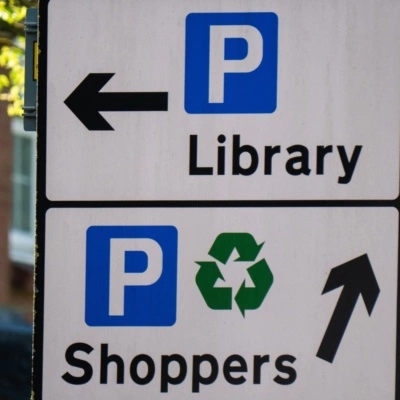If you have a Shopify store, you know that traffic is the lifeblood of your business. You can have the best looking e-commerce store, the highest-quality products, the best prices, and raving customer testimonials.
Still, if not enough people visit your online store, you won’t hit the revenue goals you have set. It is a pretty simple rule of online sales. Making it happen is a tad more complicated.
The good news is that in the next 10 minutes, you’ll learn everything you need to know to drive more traffic to your Shopify store!
How do I drive traffic to my Shopify store?

Driving traffic to your Shopify store is a whole lot different than the techniques used by brick-and-mortar stores of the past. Long gone are the days of simply putting up a bigger sign, paying for a Yellow Pages ad, advertising in the local newspaper, or even buying radio ads.
To run a successful e-commerce store, you need to get familiar with digital marketing instead. In this blog post, you’ll learn how to drive traffic to your online store with:
- SEO
- Content
- Paid advertising
- Social media
- Word-of-mouth marketing
- Influencer marketing
If you have time and resources, take a good look at the first two sections on ensuring a continuous flow of traffic organically. However, if you want quick results, jump straight to the third part where we talk about running paid ads for your products.
#1 Increase traffic to your Shopify store with SEO

The key to driving traffic to your Shopify store is to be found when your target audience searches for your products.
Today, 48% of shoppers begin their product hunt by simply typing what they are looking for into a search engine like Google. One way to get in front of your prospects is to work on your search engine optimization (SEO).
If you haven’t done much on optimizing your online store, even some minor changes would help increase search traffic by getting you higher up on the search engine results page (SERP).
Get a list of keywords (search terms)

The first step in getting started with SEO is figuring out what your potential customers are searching for. People don’t always search the way we would expect them to, so it requires keyword research.
Keyword research is about figuring out the search terms your target audience uses when searching for something you offer.
The simplest way to start is to take your main topic and type it into Google.
Let’s imagine you’re running a skincare Shopify store aimed at teenagers. You could start your research by typing “skincare products for acne” into Google.
Right away, you get a list of keywords that Google suggests automatically based on what your potential consumers search. Include them in your keywords list. Repeat the same process with each of the suggested and related keywords.
Related keywords are terms or phrases that are closely tied to your main keywords. It might be a synonym or variation of your primary words or phrases.
Once you have your preliminary list of keywords, analyze them further with Google’s Keyword Planner.
Your goal is to prioritize your keywords according to their search volume and search intent. You need to find out whether people want to find information or buy a product.
Optimize your website

Once you have figured out what people are looking for, you can optimize your Shopify store by including those keywords in some strategic places.
Informational keywords, such as “best skin care products for acne and dark spots” would be a great fit for a blog post on skincare. Whereas, transactional keywords, such as “cheap skincare for acne” should be used in your product descriptions.
Also, use keywords in your metadata, such as meta title and meta description, as shown below.

In this case, the main keywords are “Black Friday” and “Facebook ads”, which can also work as a single long-tail keyword (“Black Friday Facebook ads”).
Long-tail keywords are longer and more specific phrases. They add additional terms to the search, which is likely to narrow down the number of searches but may offer less competition from other sites. Use a tool like KWfinder to find related and long-tail keywords.
Finally, don’t forget your images. Image captions and alternate text can give search engines more information about your site and improve your SEO.
If you need help jumpstarting your SEO, know that you don’t have to go it alone. There are Shopify apps that can take some of the work and mystery out of search engine optimization. Check out the 15 Best SEO Apps for Shopify in 2022 and make your life easier!
Work on your domain authority

When deciding where your Shopify store ends up in the search results, search engines like Google also take domain authority into account.
Domain authority is measured by the number and quality of sites that link to yours. Search engines see these links as “recommendations” and indicate that your site is of high quality. This raises your domain authority and increases your chances of showing up at the top of the SERP.
One of the best strategies to get those links is by offering to help someone out with their content creation.
Look for guest post opportunities

To find places where your submissions might be welcome, visit blogs related to your product or the lifestyle related to your product. Then, see if they accept guest posts. Even if they don’t advertise guest blogging, you might still reach out to the author and make the offer.
If you get an opportunity, remember two things. First, offer your best. Be sure that the content you submit is as good or better than what the author already has on their blog. Second, be sure that you get a link back to your Shopify store. Depending on the blog, that might be a reference within your post, or the blog may have an “about the author” section where you will be listed with a link to your online store.
Most importantly, look for indirect ways to promote your products in each guest post so that readers would want to make a purchase from you.
#2 Create evergreen content to get never-ending traffic
Something that goes hand in hand with SEO is content. Content marketing is different from other types of traditional advertising. Instead of getting traffic through ads, you attract people to your Shopify store by creating and offering content that is valuable and relevant to them.
Today’s consumers often use the web to research before making a purchase. If you can create content that places you as an expert in the field the product they want and need is, they are more likely to look for your e-commerce store and purchase from you.
Even if potential customers aren’t researching, you may be able to attract buyers by creating content that relates to their lifestyle or interests and advertise it with Facebook ads.
How to write the first blog post
The idea is simple, find out what your target audience is interested in, create relevant content, and optimize the content so it can be easily found on a search engine like Google.
Here’s where your SEO research becomes handy again. However, this time try not to focus so much on the keywords tied directly to your product. Instead, expand your keyword research with related and long-tail keywords that suggest informational topics in your niche.
Once you have chosen the short keywords and long-tail keywords to focus on, it is time to create your first blog post.
The blogging platform on Shopify makes it easy to create and post content. The trick is to develop new ideas constantly and create a steady flow of great content.
- Take a look at your competitors’ blog posts to see what they are writing.
- Listen to podcasts that reflect the interests of your potential customers.
With your keywords at hand, think creatively about how you can create valuable content that will show up in search engines and succeed in driving traffic to your Shopify store.
- Create informational content.
- Give genuine advice to establish yourself as the leader in your industry.
- Don’t be overly salesy.
If your site visitors trust your content, they will trust your products, too!
#3 How to advertise your Shopify store and get results quickly
If you don’t have the time and resources to work on creating blog posts and working on your SEO, paid advertising can help you drive a large amount of traffic quickly. When done right, paid ads can help you get new visitors to your Shopify store, raise your brand awareness, and generate sales.
Getting started with advertising
Like with all marketing strategies, first, you need to start by figuring out what you are trying to do. Do you want to raise your brand awareness or do you want to drive more traffic to your online store? Different goals need different types of ad campaigns and targeting tactics. Also, you need to figure out what’s your initial budget.
The great thing about advertising is that even if you don’t make your best decisions at first, changing the course later is easy. As you begin to understand your customers better and see the initial results of your campaigns, you can adjust nearly every aspect of your strategy on the go.
Where to run paid ads for your Shopify store?
There is a growing selection of paid opportunities online, especially with new social media platforms emerging, but let’s focus on the big three — Google, Facebook, and Instagram. If you find some of them too expensive or not quite right for your business, check out Google Ads alternatives.
Since Instagram is a part of Facebook, you might consider it two, but Instagram has its own unique audience targeting and approach. At some point, you will need to decide which platform(s) you will advertise on and, if you choose more than one, how you will use each one individually as part of your overall advertising plan.
Getting inspiration
Entering the world of paid advertising is going to require some creativity. Whether you plan on focusing on text-based Google ads or want to run visual Instagram ads, using photography and video — these pieces will need to be created. Fortunately, there are tools like Canva now available that allow anyone to roll up their sleeves and make their own attention-grabbing ads.
The complexities of advertising
The advertising platforms on Google, Facebook, and Instagram are designed so that anyone can run their own ad campaign. However, the learning curve can be steep.
You may need to spend weeks watching online tutorials just to run some basic campaigns that bring you results. You may find yourself draining your ad budget testing ads that don’t sell. What do you do?
Run automated ads to drive traffic and sales quickly
With the steep learning curve of paid advertising, you can save a lot of time, money, and frustration by using a service that will take care of it for you.
Why spend ages trying to figure out the complexities of advertising when you can sit back and relax as someone else gets new customers for you? And you don’t even need to hire anyone.
Use ad automation and get your ads up and running in a matter of minutes! With an all-in-one ad manager like sixads, you can get started right away even if you don’t already have a Facebook or Google Ads account.
- Keeping your ads current
One of the biggest worries with running ads for an e-commerce store is what happens when something is no longer in stock. You may be spending money driving traffic to a product that customers can’t buy. This is a waste of money and makes a poor first impression on your target audience.
With automated ad management, like that offered by sixads, your ads stop when you sell out. If anything else about your product changes, like images or prices, your ads are automatically updated.
- Minding the analytics
Analytics are the key to success. You want to see what ads on what platform are performing best and shift resources there while slowing down or even stopping weaker performing ads and platforms. sixads simplifies the process by giving you a clear picture of your analytics from all the platforms where you have campaigns. This makes decision making faster and easier.
- Finding the right strategy to drive traffic
Getting the most of your ad spend takes a fair amount of strategic thinking. But it takes time to understand what will work best for your Shopify store. With sixads, you can be up and running using award-winning strategies that make the most out of every dollar and every click in just minutes.
- Taking care of the creative
A serious challenge of paid advertising is developing the right headline, finding the right image, and setting the right ad target. With the right platform, this can be done for you automatically. You just need to click to approve the work that sixads does and let the app’s algorithm optimize your ads.
Install sixads and start driving traffic and sales now!
#4 Be strategic with your social media
If you are serious about getting more traffic to your Shopify store, you need to have a thought-out and consistent social media strategy. This is not about occasionally posting on Twitter or sharing product photos on Instagram once in a while.
You need to develop a plan to deliver regular content that will help you engage with your customers and drive traffic to your online store.
Keep in mind that you don’t need to be present on every social media platform. That can make it hard to keep up with any of them. It is better to do an outstanding job on one than a mediocre job on several.
Start with a social media plan
Once you determine what platform or platforms you want to be on, plan your actions. Answer questions like:
- How often will you post?
- What type of posts might get the most attention?
- What will set you apart from other accounts?
- What voice or tone will you take with your posts?
Then, create a social media calendar based on your answers. Make sure you plan what you might post daily, weekly, or monthly. This will help you stay focused and avoid beginning each day by getting overwhelmed by thoughts about what to post.
Automate your social media posting
You might also consider using technology to automate your social media posting. There are apps available that help you schedule your posts weeks ahead of time, find the right times to post, and allow you to view analytics to better understand what content and times work best for meeting your objectives.
Social media automation gives you one less thing to think about every day since you can set it and let it do the work. There are plenty of options available such as Buffer or Hootsuite.
Where can you find the right content?
The easiest way to get social media content ideas is to look around. Look at other e-commerce businesses in your field or niche. You don’t need to copy them. Just use them to fuel your own creativity.
Also, look at accounts of businesses that are nothing like yours. You may find inspiration from an entirely unrelated niche that helps you think of a unique way to stand out on a social media platform.
Ideas can come from anywhere, and by keeping your eyes open and experimenting with different types of content, you can find your own unique approach
Leverage new social media features to drive traffic to your website
Social media is ever-changing, and platforms continue to look for ways to attract business.
For example, if you have a Facebook business page, you can set up a Facebook Shop. This way, you can connect Facebook directly to your Shopify store to drive people to your products without ever leaving Facebook.
Likewise, with Instagram, business accounts can now create “Shoppable Posts.”
You can connect your account to your catalog, tag posts, and have a native sales channel
directly through Instagram.
Whatever social media channel you choose, look for ways to integrate and leverage that platform to drive even more traffic to your website.
#5 Get in front of your target audience with influencer marketing
One of the best ways to drive traffic to your Shopify store is to work with influencers. Influencers are people who have large, engaging audiences on social media and have developed a sense of trust with their followers.
Getting started with an influencer marketing campaign
First of all, you need to start with a clear definition of your buyer persona. In other words, there may be many types of people that might shop at your online store, but who is the person you most want to market to? Answer some of these questions:
- Are they male or female?
- How old are they?
- How much money do they make?
- What are they interested in?
Once you have figured out these questions, look for influencers that attract your target audience. You can use tools such as Upfluence or Awario.
Narrow your influencers’ list down in terms of audience size, audience engagement, industry, demand, exclusivity, and media type (i.e., writing, photos, videos, etc.)
Setting your influencer budget
With your preferred platform in mind, it is time to start thinking about your budget. A budget is critical here because it will help you determine your expectations regarding the type of influencer you wish to engage.
Contacting your influencer
When you are ready to get started, there are many ways to contact potential influencers. Some large scale influencers may have a special email available for inquiries. For small niche influencers, it may be as simple as sending a direct message on their social media platform.
You can also use brand-building apps like Brand Ambassador to get in touch with the most relevant influencers for your online store. You can even use Fiverr and Upwork!
If you want to learn more about getting started with influencer marketing, check out our How to Start an Influencer Marketing Strategy in 7 Easy Steps.
#6 Drive traffic with Word-of-mouth marketing
Even in an online digital world, word-of-mouth continues to be the most powerful marketing available. That is why influencer marketing is such a powerful force. However, you can create your own word-of-mouth marketing (WOMM) by creating and nurturing your own brand ambassadors. Word-of-mouth is the fastest way to build trust among potential customers, and that trust makes it more likely they will buy from you.
How to get Word-of-Mouth started
How do you get people to tell other people about you? The best place to start is by creating an excellent experience for your current customers. If they are delighted with your products and your service, they are more likely to tell their friends. This takes time though, so be patient.
Building ambassadors
Return customers are not only good for sales but treat them right and they can also become your best marketing strategy. Treating customers well keeps them coming back for future purchases and may inspire them to help drive more traffic to your Shopify store.
Rewards programs are a great way to incentivize future purchases and build loyalty. That incentivized discount not only encourages another purchase, but it also draws another customer deeper into a relationship with your online store and makes it more likely that they will tell someone else.
Rewarding Word-of-Mouth
There are many creative ways to reward the behavior of your loyal customers who tell their friends. The simplest way is by identifying your best customers, especially frequent and long-term shoppers, and personally inviting them to take part in your ambassador or referral program.
Give them a referral link that they can send to their friends or share through social media. How you structure your rewards system, awarding points, gifts, or something else depends on your product line and customers’ typical lifetime value.
#7 Don’t forget the good old email marketing!
It is sometimes hard to believe, but email remains one of the most effective marketing channels. In e-commerce, it is powerful because it is easily personalized and automated.
You can automatically respond to nearly any customer touchpoint. When a customer offers their email address for a discount or free gift, you can welcome them and make a first impression.
When someone makes a first-time purchase, you can welcome them to the family. People can be reminded of abandoned carts, informed when a product they were looking at comes back in stock, or told about new products that might interest them based on their shopping history.
There are many tools to help with an email strategy. Shopify has its own email marketing platform, and there are several other third-party platforms.
Wrapping it up
Here’s a quick recap on ways to drive traffic to your Shopify store:
- Make sure your target audience can find your site on Google.
- Use keyword research to find topics that are relevant to your potential clients.
- Start a blog on your website.
- Run ads to get traffic that converts quickly.
- If you’re not familiar with paid advertising, a tool like sixads can take the stress and mystery out of paid ads and give you the time and freedom to focus on other aspects of marketing your business.
- Be strategic with your social media marketing. Use tools to schedule your posts.
- Use influencers to get your products in front of potential buyers.
- Send personalized emails.

Any one of these tips or tricks has the potential to drive more traffic to your website. You don’t have to master every single part of this list, and some may be more important than others in your niche.
The real challenge is putting together a comprehensive digital marketing strategy, including the right components that work best for your e-commerce business.
What may be most important is equipping yourself with the right tools and partners to keep up with the work and continue to seek out a steady flow of traffic that turns into revenue.




